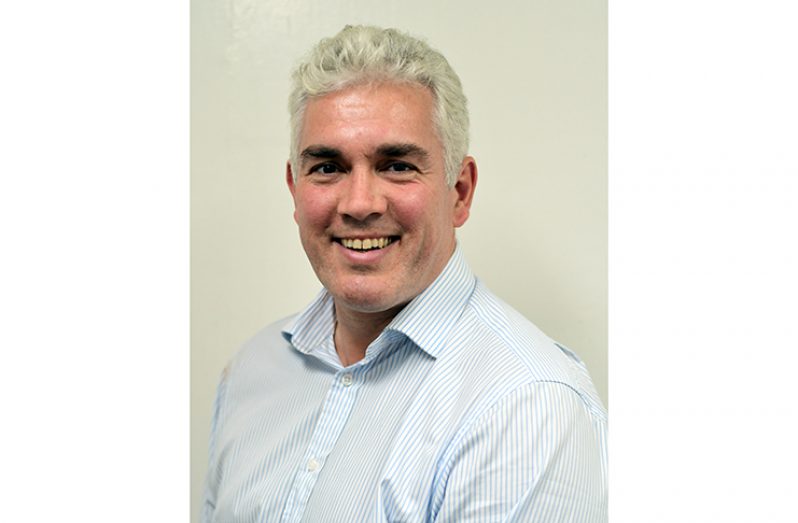— if discoveries in Orinduik Block continue,says Tullow
By Svetlana Marshall
GUYANA stands to benefit from as much as 60 per cent in oil profits, if discoveries in the Orinduik Block continue to be successful, Tullow Oil’s spokesman, George Cazenove said, as he dismissed claims that the country will only benefit from a meagre one per cent in royalty.
Less than six weeks apart, Tullow Oil, a UK-based oil company, discovered oil twice in the Orinduik Block at the Jethro-One well and the Joe-One well. Amid its success, claims surfaced that the Production Sharing Agreement (PSA) it signed with the Government of Guyana is “worse” than the PSA signed with US oil giant, ExxonMobil.
But Cazenove, in an interview with the Guyana Chronicle, said the PSA must be analysed as a whole. “There is no point talking about the royalty in isolation,” he said. According to the PSA signed between the Government of Guyana, Tullow Guyana B.V and Eco (Atlantic) Guyana Inc., the country could benefit from as much as 60 per cent in oil profit, including a one per cent royalty once the companies commence pumping for oil in the Orinduik Block.
“So we have Petroleum Sharing Agreement, in terms of the sharing which range from 50 per cent to 60 per cent. So if we produce over 80,000 barrels per day, then the government gets 60 per cent share of production and that is absolutely aligned with contracts all around the world, and that is a key part of the contract in terms of where the Guyanese economy and its people will benefit,” Cazenove explained.
According to the PSA, for the first 25,000 barrels of oil, Guyana will receive a profit of 50 per cent. For the next 25,000 barrels, the country’s profit would increase to 52.5 per cent and 55 per cent for the next 15,000 barrels. For the subsequent batch of 15,000 barrels of oil, Guyana would benefit from a 57.5 per cent profit and 60 per cent profit for more than 80, 000 barrels of oil. The profit will be shared between the government and contractor on a monthly basis.
He said in cases where the royalty is higher, the profit with the PSA is lower. “So you may have a contract where the royalty might be 15 per cent but the production sharing would be that much less, because the royalty is that much higher. So it just depends on where the weight is within the contract,” he further explained.
Iterating the need to analyse the PSA in its entirety, the Tullow spokesperson said Guyana is fortunate that at the beginning of its oil and gas life cycle it has transparency due to the fact that the government has made the contracts public.
“In many oil and gas economies, the contracts are not public, so you wouldn’t know what the state’s take is and what the company’s take is,” he noted.
Turning his attention to the company’s successes thus far, Cazenove said though Tullow has made two successful finds to date at the Jethro-One and Joe-One wells in the Orinduik Block, it remains cognisant that it is still in its early stage of exploration. “So when we say 100M barrels of oil resources that’s great, it’s a good result but it’s the start to what we are trying to achieve, and it would require further work, and further interpretation of the data that we received from the well,” he explained.
Jethro-One was drilled by the Stena Forth drillship to a total depth of 4,400 metres in approximately 1,350 metres of water. Jethro-One was the first discovery on the Orinduik licence and comprises high quality oil bearing sandstone reservoirs of lower tertiary age. The well encountered 55m of net oil pay which supports a recoverable oil resource estimate which exceeds Tullow’s pre-drill forecast of 100M barrels of recoverable resources. Meanwhile, the Joe-One exploration well was drilled by the Stena Forth drillship to a total depth of 2,175 metres in water depth of 780 metres. The evaluation of logging and sampling data confirms that Joe-One has encountered 14 metres of net oil pay in high-quality oil-bearing sandstone reservoirs of upper tertiary age.
Cazenove noted that though the Joe-One well may not have exceeded Tullow’s pre-drill forecast of 100M barrels of recoverable resources, it is a strong indication of what exist within that section of the block. “The Joe Well opens up a lot of the western side of the licence. The licence has a western side and an eastern side. The Joe Well opens up whole of the western side, and if that had been dry, if we had found nothing there, it would have been difficult to carry and explore on that side of the license. But now that we have found oil, we can use the data from there and map it unto other prospects within the licence. So it is a great start of the campaign; we are so happy and excited to drill two successes but it is still the start,” he explained.
The Repsol-operated Carapa-One well on the Kanuku licence, of which Tullow owns 37.5 per cent, is expected to have commenced drilling with the Rowan EXL II jack-up rig and will test the Cretaceous oil play with a result due in the fourth quarter of 2019.
Cazenove told this newspaper that the successes of those three wells will determine how Tullow moves forward in 2020. “So what we will do in 2020 would be a mixture of further exploration, so again, we will be looking for new accumulations of oil, but we will also be deciding what to do with both the Jethro accumulation and the Joe one as well,” he said.
Overall, Tullow Oil has injected US$80M into the drilling of the three wells offshore Guyana. With U.S oil giant ExxonMobil putting its gross recoverable resource estimate to more than six billion barrels of oil equivalent in the Stabroek Block, Cazenove said is cognisant of the country’s potential.




.jpg)









